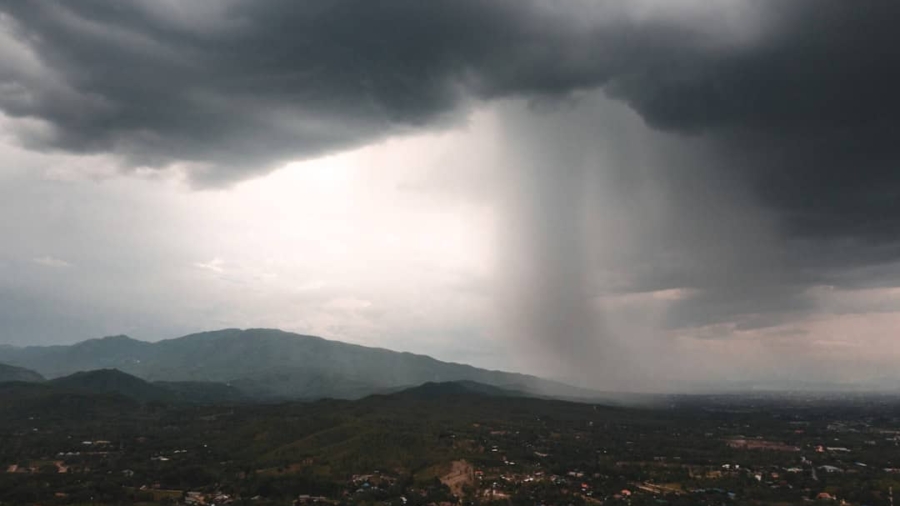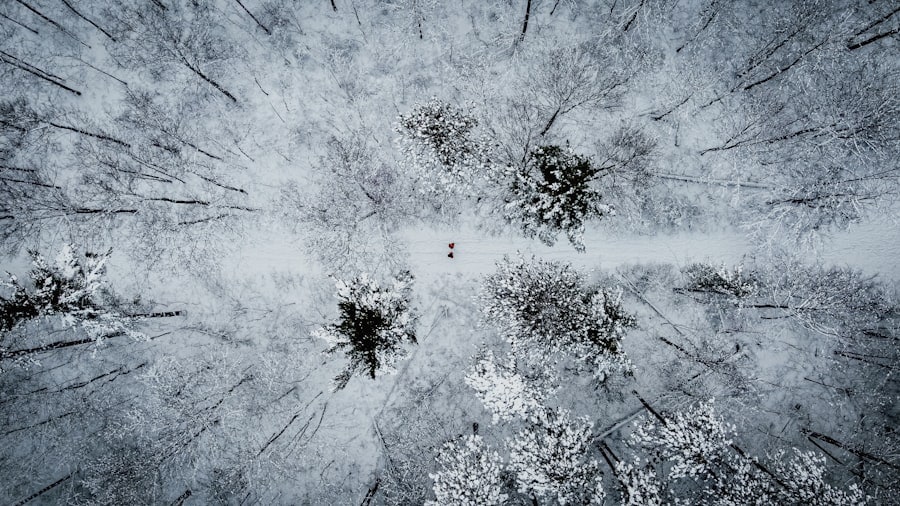The advent of drone technology has revolutionized numerous fields, and personal weather monitoring is no exception. Traditionally, weather data has been collected through a network of meteorological stations, satellites, and buoys, which can often be limited in their spatial resolution and responsiveness to localized weather phenomena. Drones, or unmanned aerial vehicles (UAVs), offer a novel approach to gathering atmospheric data, enabling individuals and organizations to monitor weather conditions in real-time and at a much finer scale.
This capability is particularly beneficial for hobbyists, researchers, farmers, and emergency responders who require precise weather information tailored to specific locations. Equipped with an array of sensors, drones can measure temperature, humidity, wind speed, and atmospheric pressure, among other variables. This data can be invaluable for various applications, from agricultural planning to disaster response.
The ability to deploy drones quickly and at relatively low cost makes them an attractive option for personal weather monitoring. As technology continues to advance, the potential for drones to enhance our understanding of local weather patterns and improve forecasting accuracy becomes increasingly apparent.
Key Takeaways
- Drones offer a convenient and cost-effective way to monitor weather conditions in real-time for personal use.
- Using drones for personal weather monitoring provides the advantage of accessing hard-to-reach or dangerous areas for data collection.
- Challenges of using drones for personal weather monitoring include limited battery life, weather conditions affecting flight, and data accuracy.
- Drones have current applications in agriculture, outdoor events, and disaster response for personal weather monitoring, with future potential in urban planning and environmental research.
- Technological advances in drones, such as improved battery life and data analysis capabilities, are enhancing their effectiveness for personal weather monitoring.
Advantages of Using Drones for Personal Weather Monitoring
Accessing Hard-to-Reach Areas
One of the most significant advantages of using drones for personal weather monitoring is their ability to access hard-to-reach areas. Traditional weather stations are often located in open fields or on rooftops, which may not accurately represent microclimates found in urban environments or dense forests. Drones can fly at various altitudes and navigate through challenging terrains, allowing for the collection of data in locations that would otherwise be inaccessible.
Enhanced Research Capabilities
This capability is particularly useful for researchers studying localized weather phenomena, such as urban heat islands or the effects of topography on precipitation patterns. Moreover, drones can be deployed rapidly in response to changing weather conditions. For instance, if a sudden storm is forecasted, a drone can be launched to gather real-time data on wind speed and direction, providing critical information that can inform emergency response efforts.
Immediacy and Cost-Effectiveness
This immediacy is a stark contrast to traditional methods that may take hours or even days to provide updated information. Additionally, the cost-effectiveness of drones makes them an appealing option for personal use; individuals can invest in a drone equipped with weather sensors without incurring the high costs associated with traditional meteorological equipment.
Challenges and Limitations of Using Drones for Personal Weather Monitoring
Despite their advantages, the use of drones for personal weather monitoring is not without challenges. One significant limitation is battery life. Most consumer-grade drones have a limited flight time, typically ranging from 20 to 30 minutes on a single charge.
This constraint can hinder the ability to collect extensive data over larger areas or during prolonged weather events. While advancements in battery technology are ongoing, current limitations necessitate careful planning regarding flight duration and data collection strategies. Another challenge lies in the regulatory landscape surrounding drone usage.
In many countries, drone operations are subject to strict regulations that govern where and how drones can be flown. These regulations often require operators to maintain visual line-of-sight with their drones and restrict flights over populated areas or sensitive locations. Navigating these legal requirements can be daunting for individuals looking to utilize drones for personal weather monitoring.
Furthermore, there are concerns regarding privacy and safety; the potential for drones to inadvertently invade personal space or collide with other aircraft raises ethical questions that must be addressed as drone usage becomes more widespread.
Current and Future Applications of Drones in Personal Weather Monitoring
Currently, drones are being employed in various applications related to personal weather monitoring. For instance, farmers are increasingly using drones equipped with multispectral sensors to monitor crop health and assess moisture levels in the soil. By correlating this data with local weather conditions, farmers can make informed decisions about irrigation and fertilization, ultimately leading to improved yields and resource management.
Looking ahead, the future applications of drones in personal weather monitoring are poised to expand significantly. As technology advances, we may see the integration of artificial intelligence (AI) and machine learning algorithms that can analyze the vast amounts of data collected by drones in real-time.
This could lead to more accurate localized weather predictions and enhanced decision-making capabilities for individuals and organizations alike. Additionally, the development of swarms of drones working collaboratively could enable comprehensive coverage of large areas, providing a wealth of data that could transform our understanding of weather dynamics.
Technological Advances in Drones for Personal Weather Monitoring
Technological advancements are continuously enhancing the capabilities of drones used for personal weather monitoring. One notable development is the miniaturization of sensors that can measure various atmospheric parameters. Modern drones can now carry sophisticated instruments that were once too large or heavy for UAV applications.
For example, compact LIDAR systems can be used to measure wind profiles at different altitudes, while advanced thermal cameras can detect temperature variations across landscapes. Furthermore, improvements in communication technologies are facilitating real-time data transmission from drones to users on the ground. With the advent of 5G networks and enhanced satellite communication systems, drone operators can receive live updates on atmospheric conditions as they occur.
This immediacy allows for timely responses to changing weather patterns and enhances situational awareness during critical events such as storms or wildfires. As these technologies continue to evolve, we can expect even greater integration between drones and personal weather monitoring systems.
Regulatory and Ethical Considerations for Using Drones in Personal Weather Monitoring
The regulatory framework governing drone usage is complex and varies significantly across different jurisdictions. In many regions, operators must obtain licenses or permits before flying drones for commercial purposes, including personal weather monitoring. These regulations are designed to ensure safety and privacy but can also pose barriers for individuals seeking to utilize drones for non-commercial purposes.
As drone technology becomes more accessible, there is a pressing need for policymakers to adapt regulations that balance innovation with public safety. Ethical considerations also play a crucial role in the deployment of drones for personal weather monitoring. The potential for privacy violations is a significant concern; drones equipped with cameras or sensors could inadvertently capture images or data from private properties without consent.
Establishing clear guidelines on acceptable drone usage is essential to mitigate these risks while promoting responsible practices among operators. Additionally, as drones become more prevalent in personal weather monitoring, there is a need for public education on their capabilities and limitations to foster trust and understanding within communities.
Potential Impact of Drones on Weather Forecasting and Disaster Preparedness
The integration of drones into personal weather monitoring has the potential to significantly impact weather forecasting and disaster preparedness efforts. By providing localized data that complements traditional meteorological sources, drones can enhance the accuracy of forecasts at a granular level. For instance, during severe weather events such as hurricanes or tornadoes, drones can be deployed to gather real-time information on wind speeds and precipitation rates in affected areas.
This data can inform emergency response strategies and improve public safety measures. Moreover, the ability to monitor environmental conditions continuously allows for better preparedness against natural disasters. Drones can be used to assess changes in terrain or vegetation that may indicate an increased risk of landslides or flooding.
By identifying these risks early on, communities can implement mitigation strategies that save lives and reduce property damage. As drone technology continues to evolve, its role in enhancing disaster preparedness will likely become even more pronounced.
The Future of Drones as Personal Weather Monitoring Tools
As we look toward the future, it is clear that drones will play an increasingly vital role in personal weather monitoring.
While challenges such as regulatory hurdles and ethical considerations remain, ongoing advancements in technology and policy adaptation will likely pave the way for broader acceptance and utilization of drones in this field.
The potential applications are vast and varied; from agriculture to disaster response, the integration of drones into personal weather monitoring systems promises to enhance our understanding of atmospheric conditions like never before. As we continue to explore this exciting frontier, it is essential to foster collaboration between technologists, policymakers, and communities to ensure that the benefits of drone technology are realized while addressing the associated challenges responsibly. The future holds great promise for drones as indispensable tools in our quest for accurate and timely weather information.
In a related article, How Smartwatches Are Revolutionizing the Workplace, the impact of wearable technology on productivity and efficiency is explored. Just as drones are transforming personal weather monitoring, smartwatches are changing the way we work and communicate. Both technologies offer convenience and accessibility, making them valuable tools in our daily lives.
FAQs
What are drones?
Drones, also known as unmanned aerial vehicles (UAVs), are aircraft that are operated without a human pilot on board. They can be controlled remotely by a human operator or autonomously by onboard computers.
How are drones used for personal weather monitoring?
Drones can be equipped with various sensors and instruments to collect data on temperature, humidity, air pressure, wind speed, and other weather-related parameters. This data can be used to monitor local weather conditions and provide real-time information to individuals or organizations.
What are the advantages of using drones for personal weather monitoring?
Drones offer the advantage of being able to collect data from specific locations that may be difficult to access by traditional means. They can also provide real-time data and be deployed quickly in response to changing weather conditions.
What are the potential applications of drones for personal weather monitoring?
Drones can be used for a variety of applications, including monitoring weather conditions for outdoor events, agricultural operations, and emergency response efforts. They can also be used to gather data for scientific research and environmental monitoring.
What are the challenges of using drones for personal weather monitoring?
Challenges include regulatory restrictions on drone operations, limitations in battery life and flight range, and the need for accurate and reliable sensors and data processing systems. Additionally, privacy concerns and potential interference with other aircraft must be addressed.
What is the future outlook for drones as personal weather monitoring tools?
As technology continues to advance, drones are expected to play an increasingly important role in personal weather monitoring. Continued improvements in sensor technology, battery life, and autonomous flight capabilities are likely to expand the capabilities and applications of drones for weather monitoring.



